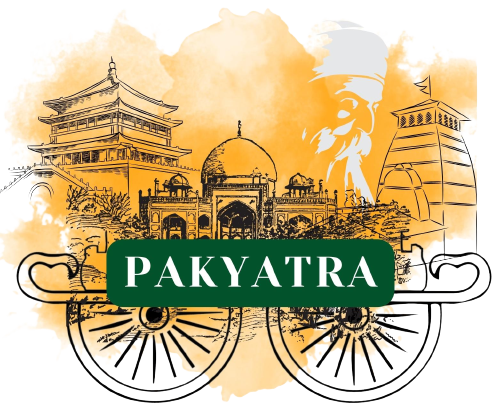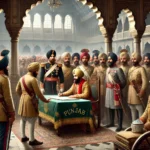PAK YATRA is a tour operator company providing tour services and facilitates Sikh community from different parts of the world.
Title: “Discovering the Rich History of Harappa Museum and Site”
The Harappa Museum and its archaeological site are a prominent feature in the picturesque Pakistani countryside, situated on the left bank of the old course of River Ravi. These historical treasures are conveniently located just 7 kilometers away from the Harappa Road Railway Station, making them easily accessible via the Karachi-Peshawar line of Pakistan Railways. Visitors can also opt for a comfortable journey via a well-maintained metalled road. For those seeking alternative transportation, direct wagon and bus services are available from Sahiwal and Chichawatni, the district town located at a distance of 24 kilometers from the Harappa Museum.
Established in 1926, the Harappa Museum is a site museum that showcases the rich history and culture of the Harappa civilization, a significant part of the ancient Indus Valley civilization. This civilization, one of the world’s oldest, thrived from around 3500 B.C. to 1500 B.C. in the regions watered by the Indus River and its tributaries, including Ravi, Bias, Satlug, Chanab, and Jhelum. The Indus Valley Civilization left behind over four hundred sites, with Harappa and Mohenjodaro recognized as two major urban centers.
Harappa, known as a type site of the Indus Valley civilization, holds a special place in its history. The first documented visit to the ancient mounds at Harappa dates back to 1826 when Mr. Masson reported his findings. Subsequently, Mr. Burns explored the mounds in 1831, followed by Cunningham’s two visits in 1853 and 1856. Cunningham estimated the extent of the ruined city to be around 3 kilometers in circumference, focusing solely on the structural remains. However, if we consider the fields now covered with broken bricks and scattered remnants, the ancient city’s expanse stretches to nearly 5 kilometers in circumference.
Unfortunately, before the area was declared protected in 1920, the mounds at Harappa had been a source of brick ballast for the construction of the Lahore-Multan Railway line, spanning over 160 kilometers. Additionally, the mounds provided a readily available source of bricks for the inhabitants of modern towns in the Harappa region.
The first systematic excavation at Harappa was conducted by Daya Ram Sahni from 1921 to 1925. Following his work, Mr. Madho Sarup Vats took charge of excavations from 1926 to 1934. In 1937, Mr. K.N. Shastri continued the excavations. Sir R.E.M. Wheeler laid trenches on the site from 1944 to 1946, adding to our understanding of the site’s historical significance.
With the emergence of Pakistan on August 14, 1947, Dr. Muhammad Rafique Mughal initiated excavations at Harappa in 1966, contributing valuable information to the site’s historical record. The American archaeological mission, in collaboration with the Department of Archaeology and Museums under the guidance of Dr. George F. Dales, conducted archaeological research at Harappa from 1986 to 2001.
Today, Harappa stands as the only site of the Indus Valley civilization that provides a complete chronology spanning from 3500 to 1500 B.C. A visit to Harappa allows you to study the evolution and development of various arts, crafts, and technologies of the Indus Valley civilization. While the excavations at Harappa did not reveal the complete town planning of the ancient city, the numerous valuable objects unearthed from the site are displayed in the museum.
The Harappa Museum’s displays offer visitors a window into the religion, art and craft, trade and agriculture, and social life of the people who lived in this city thousands of years ago. With two galleries housing a total of 30 showcases, the museum ensures an informative and captivating experience for all those interested in exploring the treasures of Pakistan’s rich history.
So, whether you’re a history enthusiast or simply curious about the past, a visit to the Harappa Museum and site promises to be a journey of discovery and enlightenment into the ancient world of the Indus Valley civilization.




